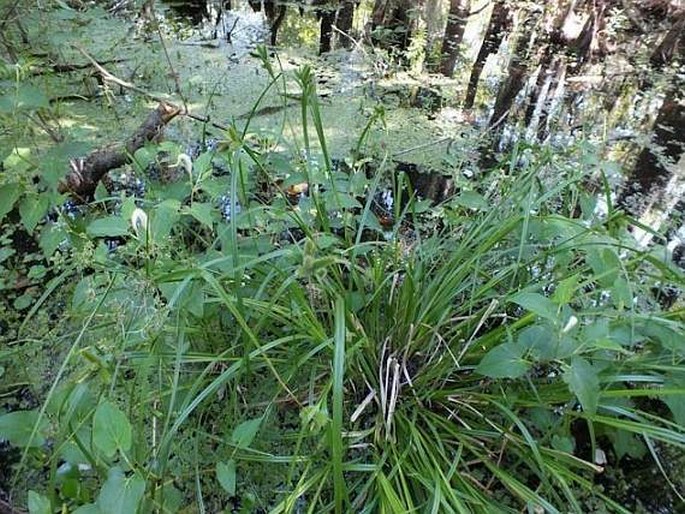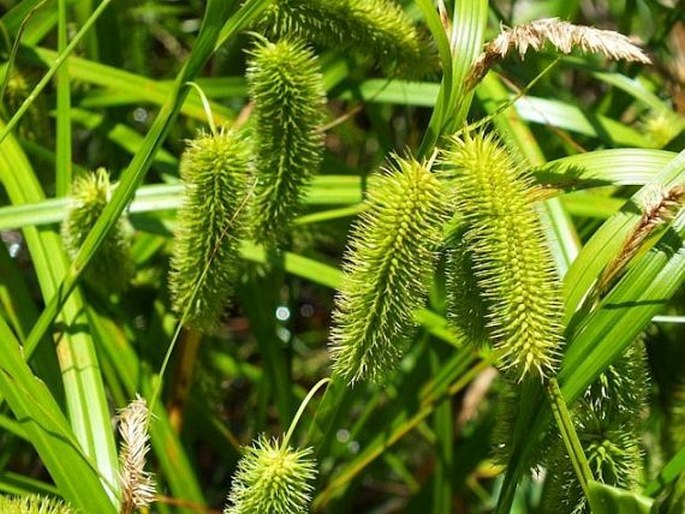Syn.: Carex atrovirens Boeckeler, Carex involucrata Boeckeler
Family: Cyperaceae Juss.

Distribution: American species found in south east part of North America, from Nebraska, Illinois, Indiana and from Virginia southward to Florida, to Texas, New Mexico and Mexican states of Coahuila and Nuevo León, also southern Brasil, Paraguay, and northern Argentina.
Ecology: Wet meadows and woods, swamps and marshes, muddy margins of lakes and ponds, roadside ditches. Low elevation plant from sea level to 500 m. Blooms in early spring, fruiting in summer.

Description: Perennial sedge, colonial forming clumps, from long rhizomes. Stems 20–85 cm tall; leaves 2–8.5 mm wide, with prominent crease in the middle. Flower clusters in spikes, 4–6, erect, lateral spikes with pistillate and few staminate flowers, 4–5 cm long, about 15 mm wide, terminal spike usually staminate, exceptionally with both kinds of flowers; pistillate scales with distinct body, 3–10 mm long, apex with long awn exceeding peryginia; staminate scales overlapping, apex acute to truncate or retuse; bracts leaf-like; perigynia horizontal, 3.2–5.1 × 1.3–2.5 mm, minutely warty; beak 1.2–2.1 mm, smooth. Achenes trigonous-obovoid, sides concave, 1.2–2.1 mm long; style deciduous.



These images were taken in USA, Louisiana, Jean Lafitte NP, Barataria Preserve (May 2014).


